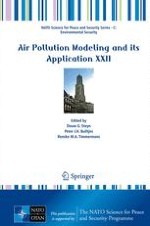2014 | OriginalPaper | Buchkapitel
28. Application of PMF for Evaluation of the Fine Particles Contribution from Vehicular Emission in Six Brazilian Cities
verfasst von : Maria Andrade, Beatriz Oyama, Adalgiza Fornaro, Regina Miranda, Paulo Saldiva
Erschienen in: Air Pollution Modeling and its Application XXII
Verlag: Springer Netherlands
Aktivieren Sie unsere intelligente Suche, um passende Fachinhalte oder Patente zu finden.
Wählen Sie Textabschnitte aus um mit Künstlicher Intelligenz passenden Patente zu finden. powered by
Markieren Sie Textabschnitte, um KI-gestützt weitere passende Inhalte zu finden. powered by
